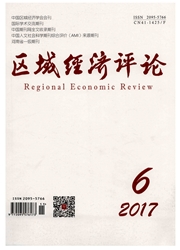

 中文摘要:
中文摘要:
在对产业协同集聚进行综合测评的基础上,以长三角城市群30个地级及以上城市2005—2014年相关数据为例,利用空间面板模型对影响产业协同集聚的主要因素及其作用机制进行检验,结果显示:产业关联、知识溢出、商务成本、中心城市辐射、政府干预、FDI以及市场因素都具有显著影响,但影响程度和作用方向迥异;产业协同集聚具有产业与空间的交互属性,而制度协同则是实现两大维度有效衔接的关键所在。为此,要切实推进城市群产业协同集聚必须综合考虑行业特质、空间诉求及制度导向,实现城市间的整体统筹协调以及城市内细分行业的差别化指导。
 英文摘要:
英文摘要:
Based on the comprehensive evaluation of co-agglomeration, the paper takes panel data of the Yangtze River Delta urban agglomeration from 2005---2014 as an example, uses spatial econometric model to test the main factors that influencing co-agglomeration and its mechanism of action. Main results indicate as follows: from the space dimension, industry linkage, knowledge spillover, business cost, central city radiation, government intervention, FDI and market factors all have significant impacts on co-agglomeration, but the effects and directions are different. From the industry perspective, the impacts of core variables are still significant, but the differences are obvious among the subdivided service industries. Co-agglomeration has the industrial and spatial interaction attributes, and institutional synergy is the key to achieve effective convergence of thus two dimensions. To this end, it is necessary to comprehensively consider the industrial characteristics, spatial demands and system guidance to achieve the overall co-ordination of the city, as well as the differentiation guidance among the subdivided industries inside the city.
 同期刊论文项目
同期刊论文项目
 同项目期刊论文
同项目期刊论文
 期刊信息
期刊信息
